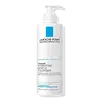What's inside
What's inside
 Key Ingredients
Key Ingredients

 Benefits
Benefits

 Concerns
Concerns

 Ingredients Side-by-side
Ingredients Side-by-side

Water
Skin ConditioningSodium Cocoyl Glycinate
CleansingSodium Cocoamphoacetate
CleansingSodium Chloride
MaskingPolyglyceryl-10 Laurate
Skin ConditioningGlycerin
HumectantCocamidopropyl Betaine
CleansingAcrylates/C10-30 Alkyl Acrylate Crosspolymer
Emulsion StabilisingGlycol Distearate
EmollientSucrose
HumectantMalpighia Punicifolia Fruit Extract
AntioxidantChaenomeles Sinensis Fruit Extract
AntioxidantCamellia Sinensis Leaf Extract
AntimicrobialFicus Carica Fruit Extract
HumectantGinkgo Biloba Leaf Extract
Skin ConditioningTocopheryl Acetate
AntioxidantCoconut Acid
CleansingSodium Cocoate
CleansingSodium Metabisulfite
AntioxidantPolyquaternium-7
Sodium Benzotriazolyl Butylphenol Sulfonate
UV AbsorberButylene Glycol
HumectantCaprylyl Glycol
EmollientSodium Benzoate
MaskingPhenoxyethanol
PreservativeCI 42090
Cosmetic ColorantCI 16035
Cosmetic ColorantCI 77891
Cosmetic ColorantCI 19140
Cosmetic ColorantCI 15985
Cosmetic ColorantWater, Sodium Cocoyl Glycinate, Sodium Cocoamphoacetate, Sodium Chloride, Polyglyceryl-10 Laurate, Glycerin, Cocamidopropyl Betaine, Acrylates/C10-30 Alkyl Acrylate Crosspolymer, Glycol Distearate, Sucrose, Malpighia Punicifolia Fruit Extract, Chaenomeles Sinensis Fruit Extract, Camellia Sinensis Leaf Extract, Ficus Carica Fruit Extract, Ginkgo Biloba Leaf Extract, Tocopheryl Acetate, Coconut Acid, Sodium Cocoate, Sodium Metabisulfite, Polyquaternium-7, Sodium Benzotriazolyl Butylphenol Sulfonate, Butylene Glycol, Caprylyl Glycol, Sodium Benzoate, Phenoxyethanol, CI 42090, CI 16035, CI 77891, CI 19140, CI 15985
 Reviews
Reviews

Ingredients Explained
These ingredients are found in both products.
Ingredients higher up in an ingredient list are typically present in a larger amount.
Caprylyl Glycol is a humectant and emollient, meaning it attracts and preserves moisture.
It is a common ingredient in many products, especially those designed to hydrate skin. The primary benefits are retaining moisture, skin softening, and promoting a healthy skin barrier.
Though Caprylyl Glycol is an alcohol derived from fatty acids, it is not the kind that can dry out skin.
This ingredient is also used as a preservative to extend the life of products. It has slight antimicrobial properties.
Learn more about Caprylyl GlycolGlycerin is already naturally found in your skin. It helps moisturize and protect your skin.
A study from 2016 found glycerin to be more effective as a humectant than AHAs and hyaluronic acid.
As a humectant, it helps the skin stay hydrated by pulling moisture to your skin. The low molecular weight of glycerin allows it to pull moisture into the deeper layers of your skin.
Hydrated skin improves your skin barrier; Your skin barrier helps protect against irritants and bacteria.
Glycerin has also been found to have antimicrobial and antiviral properties. Due to these properties, glycerin is often used in wound and burn treatments.
In cosmetics, glycerin is usually derived from plants such as soybean or palm. However, it can also be sourced from animals, such as tallow or animal fat.
This ingredient is organic, colorless, odorless, and non-toxic.
Glycerin is the name for this ingredient in American English. British English uses Glycerol/Glycerine.
Learn more about GlycerinChances are, you eat sodium chloride every day. Sodium Chloride is also known as table salt.
This ingredient has many purposes in skincare: thickener, emulsifier, and exfoliator.
You'll most likely find this ingredient in cleansers where it is used to create a gel-like texture. As an emulsifier, it also prevents ingredients from separating.
There is much debate on whether this ingredient is comedogenic. The short answer - comedogenic ratings don't tell the whole story. Learn more about comegodenic ratings here.
The concensus about this ingredient causing acne seems to be divided. Research is needed to understand if this ingredient does cause acne.
Scrubs may use salt as the primary exfoliating ingredient.
Learn more about Sodium ChlorideWater. It's the most common cosmetic ingredient of all. You'll usually see it at the top of ingredient lists, meaning that it makes up the largest part of the product.
So why is it so popular? Water most often acts as a solvent - this means that it helps dissolve other ingredients into the formulation.
You'll also recognize water as that liquid we all need to stay alive. If you see this, drink a glass of water. Stay hydrated!
Learn more about Water